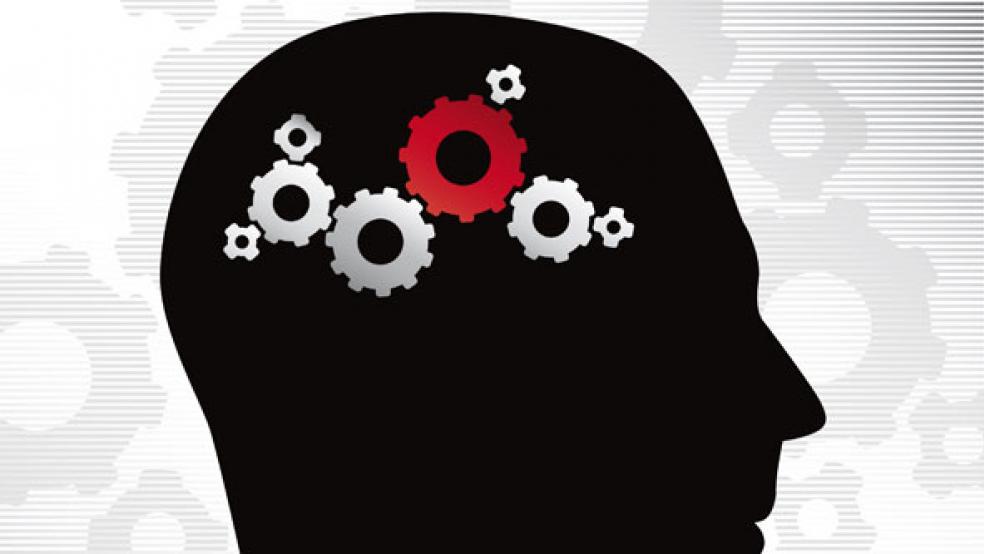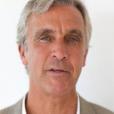Picture this: A global business magazine features a close-up head-shot of a 30-year-old male on its cover. He’s of Indian descent, with an American upbringing and education, and he’s just concocted a multi-million dollar business out of thin air. He’s lauded for his vision, his savvy and his striking intelligence with things both financial and technical.
Now picture this: He’s thousands of miles from Silicon Valley. He hasn’t created an app and he’s not selling the next-big-thing to millennials in San Francisco or Shanghai.
Vivek Ramaswamy is in biotech and the company he’s just spun out, Axovant Sciences, is developing a medicine for Alzheimer’s disease – a disease that affects the old and app-less. By all counts, Ramaswamy and Axovant are the antitheses of California cool – and they’re light years ahead of the there’s-an-app-for-that herd.
They’ve just shepherded the largest biotech IPO to date. And they did it with a company that has only one medication in development.
What makes this story more remarkable is that the drug Axovant is developing was picked up from another company’s failed medicine pipeline. How could this potential winning therapy be sitting in limbo? The answer involves some inscrutable concoction of regulatory nightmares, quarterly earnings pressure and other mazes that make up the world of big pharma.
Some analysts say this IPO points to a biotech bubble that is about to pop.
Related: Why a 62-Year-Old Drug Now Costs 5,000 Percent More
Wrong.
What Vivek and Axovant’s stunning and innovative risk-taking illustrates is that, in this aging world, there’s massive demand for new medicines. As upwards of 30% of the population passes 60 in most G20 countries – and as less developed nations will soon become as old as those of us in Europe, Japan and the U.S. – the demand for age-related medications sets the stage for pretty good strategy.
So ignore the naysayers -- this is a tremendous story.
Axovant is going all in to beat one of the toughest diseases out there. Many investors call Alzheimer’s a financial black hole, and we’ve seen plenty of researchers pull out as medicines fail to make it through the regulatory hurdles. This is terrible news for the tens of millions affected by the disease, as well as the rest of us who will have to pay for those afflicted.
Already, 46.8 million people are estimated to live with dementia, and that number “will almost double every 20 years,” according to estimates by Alzheimer’s Disease International. Five years ago, Alzheimer’s was estimated to consume 1% of global GDP. If we want to talk about the finances of Alzheimer’s, surely these figures are more alarming than Axovant’s IPO.
The other key element to this story is Mr. Ramaswamy himself. A technical wizard and a financial genius, Vivek didn’t turn to the Valley for a potential cure, but to pharma. It’s a revealing decision, one that has put him at one of the most important intersection of the 21st century: health, aging and pharmaceuticals.
Ramaswamy’s story also highlights that we must anticipate living to 100 or beyond. Aging is about 20-somethings just as must as 70-somethings. It’s about crafting a ten-decade life course.
In this era of the “miracle of longevity,” young people ought to focus on three things: health, financial security and ongoing education. Mr. Ramaswamy is firing on all cylinders.
With life expectancy now stretching into the 80s and with one in every two-and-a-half people subject to dementia after the age 85, Alzheimer’s disease should be at the top of all our lists, both in terms of financial analysis and he social values.
Dr. Peter Piot, who led the UN’s fight against HIV/AIDS, has called Alzheimer’s a “ticking time bomb.” Now is not the time to rail against whatever financial incentives entice our best and brightest to beat it.
Picture this: A global business magazine features a close-up head-shot of a 30-year-old male on its cover. He’s of Indian descent, with an American upbringing and education, and he’s just concocted a multi-million dollar business out of thin air. He’s lauded for his vision, his savvy and his striking intelligence with things both financial and technical.
Now picture this: He’s thousands of miles from Silicon Valley. He hasn’t created an app and he’s not selling the next-big-thing to millennials in San Francisco or Shanghai.
Vivek Ramaswamy is in biotech and the company he’s just spun out, Axovant Sciences, is developing a medicine for Alzheimer’s disease – a disease that affects the old and app-less. By all counts, Ramaswamy and Axovant are the antitheses of California cool – and they’re light years ahead of the there’s-an-app-for-that herd.
They’ve just shepherded the largest biotech IPO to date. And they did it with a company that has only one medication in development.
What makes this story more remarkable is that the drug Axovant is developing was picked up from another company’s failed medicine pipeline. How could this potential winning therapy be sitting in limbo? The answer involves some inscrutable concoction of regulatory nightmares, quarterly earnings pressure and other mazes that make up the world of big pharma.
Some analysts say this IPO points to a biotech bubble that is about to pop.
Wrong.
Related: America’s 10 Top Selling Medications
What Vivek and Axovant’s stunning and innovative risk-taking illustrates is that, in this aging world, there’s massive demand for new medicines. As upwards of 30% of the population passes 60 in most G20 countries – and as less developed nations will soon become as old as those of us in Europe, Japan and the U.S. – the demand for age-related medications sets the stage for pretty good strategy.
So ignore the naysayers -- this is a tremendous story.
Axovant is going all in to beat one of the toughest diseases out there. Many investors call Alzheimer’s a financial black hole, and we’ve seen plenty of researchers pull out as medicines fail to make it through the regulatory hurdles. This is terrible news for the tens of millions affected by the disease, as well as the rest of us who will have to pay for those afflicted.
Already, 46.8 million people are estimated to live with dementia, and that number “will almost double every 20 years,” according to estimates by Alzheimer’s Disease International. Five years ago, Alzheimer’s was estimated to consume 1% of global GDP. If we want to talk about the finances of Alzheimer’s, surely these figures are more alarming than Axovant’s IPO.
The other key element to this story is Mr. Ramaswamy himself. A technical wizard and a financial genius, Vivek didn’t turn to the Valley for a potential cure, but to pharma. It’s a revealing decision, one that has put him at one of the most important intersection of the 21st century: health, aging and pharmaceuticals.
Ramaswamy’s story also highlights that we must anticipate living to 100 or beyond. Aging is about 20-somethings just as must as 70-somethings. It’s about crafting a ten-decade life course.
In this era of the “miracle of longevity,” young people ought to focus on three things: health, financial security and ongoing education. Mr. Ramaswamy is firing on all cylinders.
With life expectancy now stretching into the 80s and with one in every two-and-a-half people subject to dementia after the age 85, Alzheimer’s disease should be at the top of all our lists, both in terms of financial analysis and he social values.
Dr. Peter Piot, who led the UN’s fight against HIV/AIDS, has called Alzheimer’s a “ticking time bomb.” Now is not the time to rail against whatever financial incentives entice our best and brightest to beat it.



